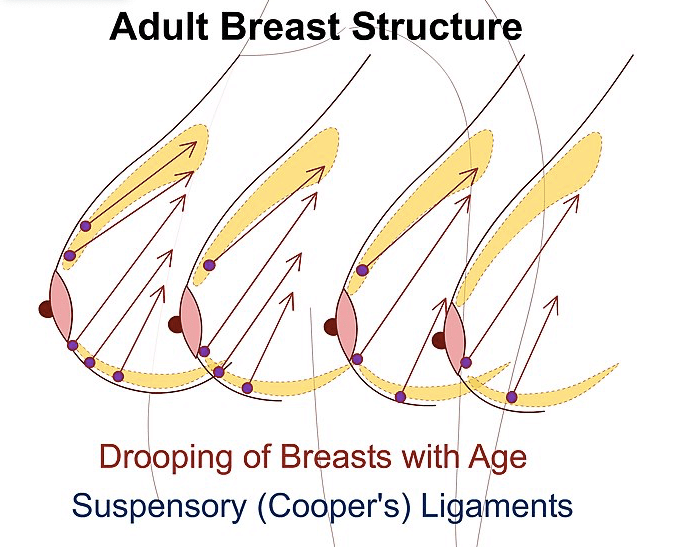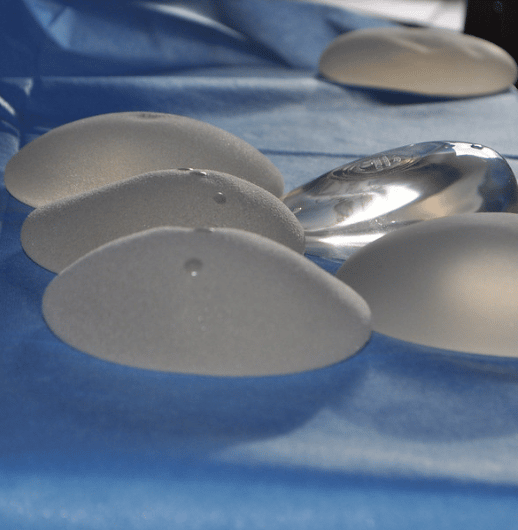What to Expect After Breast Implant Removal?
Breast implant removal is a surgery to take out silicone or saline implants from the breast.
Several procedures can be done during breast implant removal surgery, the outcome largely depends on the reason why the operation is done and the type of procedure the patient chooses to undergo.
In this article, we will cover all the commonly asked questions about breast implant removal surgery.
What are the Indications for Breast Implant Removal?
There are several reasons why people choose to or have to remove their breast implants:
- Breast implants don’t last a lifetime. According to “The American Society of Plastic Surgeons” people with breast implants have to remove or replace implants every 10 to 15 years. In case no complication has taken place, the plastic surgeon might not recommend taking out implants.
- Capsular contraction – one of the common reasons why implants and surrounding scars have to be removed is hardened scar tissue around the implant which causes discomforting symptoms like pain and tightness. It also makes the appearance of breasts change. They become asymmetrical, firm, and misshapen.
- Implant rupture or leakage of internal implant filler. When the contents of the implant filled with saline flow out, the breasts noticeably shrink and fall off. On the other hand, more commonly used silicone implant leaks don’t manifest clearly, and can only be noticed with the help of a mammogram or magnetic resonance imaging. According to a study, “Rupture risk increases significantly after 6 years with 15% of modern implants expected to rupture between the third and tenth year after implantation”
- Breast implant-associated anaplastic large cell lymphoma (BIA-ACLC) – According to NCCN guidelines, if BIA-ALC is diagnosed, surgery to remove implants and surrounding scar tissue capsules should be performed. Even if only one implant is affected, both implants should be removed.
- Breast implant illness (BII) – is quite rare, but there is a significant amount of women who have complained of it. Autoimmune reaction against the breast implant or scar tissue. BII presents with symptoms like hair loss, chronic fatigue, rash, weight loss, and joint, and muscle pain. If you feel any of these symptoms, make sure to contact your doctor.
- Dissatisfaction with breast shape – Some patients change their minds about implants because the size or shape of an implant isn’t exactly what they expected. Or physiological states like pregnancy, breastfeeding, menopause, or extreme weight changes move implants into the wrong positions changing the overall appearance of breasts.
What Surgery Options Are There?
There are several things a surgeon can do during this procedure. Depending on the patient’s desired outcome, surgery can involve:
- Only breast implant removal
- Removal of scar tissue
- Implant removal with a breast lift (mastopexy)
- Implant removal and replacement
Before the Surgery
The patient will have a consultation with a plastic surgeon before the procedure to determine the exact reason for implant removal.
The surgeon will physically examine the structure of the implants by inspecting and palpating breasts. They will proceed to evaluate the patient’s general health condition by doing some imagining and lab tests.
The patient might need to adjust current medications and lifestyle: avoid drugs that increase bleeding, stop smoking and drinking alcohol, and limit anti-inflammatory drugs.
The doctor and patient must discuss realistic expectations of the surgery and any potential risks beforehand.
What Steps Does the Procedure Consist of?
The breast implant surgery procedure consists of steps that are quite similar to breast augmentation surgery.
1. Anesthesia – General or Local. Just like in breast augmentation, surgery to remove or replace breast implants is performed under general anesthesia. Local anesthesia is rarely used, only in cases when the implant is intact, the amount of breast tissue is small and scar tissue doesn’t need removal.
2. Incision – to avoid adding another scar to the patient’s body, the site for incision is almost always the same one that was made during breast augmentation surgery.
Most of the time, it’s either submammary (under breasts) or Periareolar (around areolas). In case implants were put in through the armpits, the surgeon won’t be able to cut through the same incision site. They will use the submammary approach.
3. Surgery – Removing or replacing breast implants is an easier operation compared to breast augmentation since the implant bed has already been formed.
Breast implants are removed from the breast capsule, a “pocket” made of fibrous scar tissue. Usually, the capsule is removed, too. The procedure is called “Capsulectomy”. In case the scar tissue is thin, it doesn’t require removal.
Surgeons might remove implants and capsules in one piece at the same time. This is called “En Bloc Capsulectomy”. Or remove the implant first and then go back to remove the capsule.
4. Closing incision – Sutures, skin adhesives, clips, or tapes are used to close the skin incisions.
What is Recovery Period Like?
While recovery periods vary from person to person, most surgeons agree that recovery from this surgery is usually smoother compared to first breast augmentation surgery.
Patients usually feel soreness and discomfort for several weeks.
After the surgery, most clinics require patients to stay in the hospital for at least 1 day.
- Moderate chest pain may be troubling at first. During the first few days, the patient may feel discomfort due to skin tension and swelling of soft tissues.
- It is recommended to wear compression garments for at least 1-2 weeks for better tissue repair, reduction of edema and minimization of postoperative complications.
- The patient will get instructions about how to care for the surgical sites following surgery and what medications can be used.
- The patient will learn how to identify alarming signs to look for in the days following the surgery and when to follow up with the surgeon.
- Heavy physical activity should be excluded for at least 2-3 weeks.
- It will be necessary to avoid visiting the sauna, and tanning beds. Avoid hot baths and contrast showers.
- If a breast lift was also performed, then rehabilitation may take a little longer. On average, full recovery is worth waiting for in a few months.
How Long Does Breast Implant Removal Last?
The duration of the surgery depends on the type of surgery performed and the condition of the implants. For most, it takes approximately 1.5 hours. During the consultation, the specialist will be able to clarify the probable operating time.
What To Expect From Breast Implant Removal?
Results are different for everyone and largely depend on the condition and shape of the breasts before the augmentation. Also, the size, type of implants, and the body’s reaction to implants carry a significant role in the outcome.
Sagging and Loose Skin
Once the implants are removed, the breast will initially look deflated.
Removal of Larger implants has a higher risk of sagging since the skin is stretched more. That’s why surgeons often recommend doing removal or replacement in conjunction with a breast lift, which takes additional surgery and recovery time.
Older females or those who have gone through significant weight and hormonal changes will likely have less collagen and elasticity in the skin. Hence there’s a higher chance of sagging.
There are a lot of conditions that play a role in the change of breast shape, size, and elasticity. Pregnancy, Breastfeeding, Menopause, Weight gain or loss. All of these factors should be considered before the surgery.
Patients who had smaller implants were less likely to experience drooping and sagging.

What to Expect After Breast Implant Removal – Adult Breast Structure
Scarring
Even though there are various techniques developed to minimize scarring as much as possible, there still will be some scarring at the incision site.
The breast implant removal surgery almost always uses the incision sites from your original breast augmentation surgery, therefor scars after removal surgery are likely to remain longer than after the first operation.
Scars will heal and fade over time, but there’s no chance for them to completely disappear.
Changes in Skin Sensation
This complication is usually expected when the procedure is done through a periareolar incision (around the areola).
Patients may lose feeling around the nipples, mainly because the nerves that send pain-sensing signals to the nipples are accidentally cut during the procedure. The nerves are so small that it’s difficult to see them.
In case the patient doesn’t want to experience this side effect, another approach should be considered.
Altered Breast Shape
After the removal of breast implants, it is almost impossible to accurately predict the postoperative shape of the breast.
Breasts tend to develop more indentations and irregularities than they had before the surgery, all due to the presence of scar tissue.
In case a removal surgery is done because of implant leakage, which tends to spill into the breast tissue, some part of breast tissue should also be removed, making the patient’s breast smaller than it used to be.
For improved appearance, physicians recommend getting implant replacement and breast lift.

What to Expect After Breast Implant Removal?
What are the Advantages of Breast Implant Removal?
The exact benefits of the procedure vary depending on the reason for implant removal. For example, becoming pain-free after removing scar tissue causes capsular contracture or having a better cosmetic outcome after prior unsuccessful surgery.
There are some other specific advantages to becoming implant-free.
- No need for regular MRI screening – Patients who get silicone implants is advised to perform MRI scans regularly. MRI scans are quite expensive and discomforting for some people. Removing an implant can remove this problem also.
- Mammograms are easier to perform – breast augmentation limits the visibility of breast tissue on mammograms, making it difficult for doctors to screen for breast cancer. Without implants, mammogram screens become more clear.
- No risks for implant rupture – this potential complication of breast augmentation surgery might be a topic of concern for some patients, but removing implants takes those worries away.
- No risk for BIA-ACLC – even though statistics say this complication is very rare, it’s still there and the fact that it’s not completely understood makes it even more complicated.
What Does Breast Implant Removal Cost?
According to The American Society of Plastic Surgeons 2020 statistics, the average cost of breast implant removal surgery is $3,049. The price generally ranges from 2000-4000$, depending on the clinic.
This includes the value of the surgery, including the surgeon’s fee. However, it doesn’t include additional costs, like anesthesia and operating room facility fees.
Insurance doesn’t cover expenses like this unless there is a medical reason to remove the implants.
What are the Risks of Breast Implant Removal Surgery?
Like any other invasive procedure, implant removals also come with some potential risks that are discussed beforehand with the patient.
- Infections
- Bleeding
- Scarring
- Persistent Pain
- Adverse reactions to anesthesia
The good news is that these complications are relatively rare and easily manageable. A patient needs to be aware of these risks to quickly identify first signs and follow up with the doctor.
What are the Contraindications of Breast Implant Removal?
Contraindications for breast implant removal surgery are about the same as for breast augmentation.
- Cardiovascular diseases
- Pulmonary insufficiency
- Chronic diseases in the acute stage
- Active, severe Infections
- Oncology
- Diabetes Mellitus
- Blood clotting diseases
- Pregnancy and Breastfeeding
References:
https://www.plasticsurgery.org/cosmetic-procedures/breast-implant-removal/procedure
https://www.ncbi.nlm.nih.gov/pmc/articles/PMC5409893/
https://my.clevelandclinic.org/health/treatments/21799-breast-implant-removal
https://plasticsurgery.ca/wp-content-csps/uploads/2016/05/NCCN-Nov-16.pdf
https://www.northraleighplasticsurgery.com/what-to-expect-from-breast-implant-removal-surgery
https://www.missionplasticsurgery.com/blog/breast-implant-removal/
See Also


